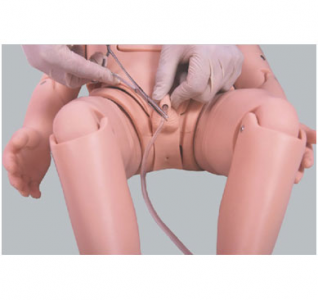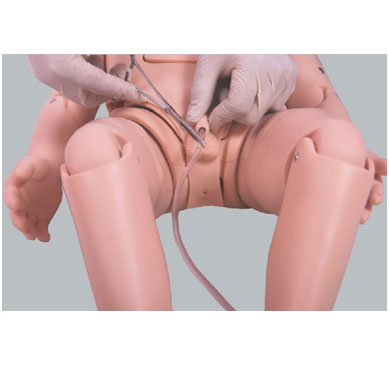ADA MED SUPPLY LIMITED
Phone:+86 19937901373
Tel:+86-0379-65160607
Email:adaanatomy@adaanatomy.com

Article tag: Pediatric catheter model pediatric catheterization model

Pediatric catheterization model plays a vital role in medical education and training, and its design and application have significant significance in reducing clinical complications. Here are a few ways the pediatric catheterization model can help reduce clinical complications:
Pediatric urinary catheterization model can not only make medical staff feel close to the real operating experience in the training, but also help them better understand the characteristics of the pediatric urinary system, so as to be more meticulous and careful in the actual operation, and reduce the misoperation caused by unfamiliar.

In the model training, medical staff are required to strictly adhere to the principles of aseptic manipulation and use gentle methods to perform urinary catheterization. This training helps to cultivate the aseptic concept of medical staff and reduce complications such as urinary tract infections caused by improper operation. At the same time, gentle manipulation can also reduce the risk of urethral mucosa damage in children.
Through repeated catheterization operation training on the model, medical staff can master the operation process and skills of catheterization, and improve the accuracy and proficiency of operation. The improvement of this skill helps to complete the urinary catheterization task more quickly and accurately in the actual operation, and reduces the complications caused by the unskilled operation.
In addition to direct skills training, pediatric catheterization models can also be used for medical education and popularization. By showing the model and explaining relevant knowledge to medical staff, students and parents, they can improve their awareness and attention to pediatric catheterization, so as to pay more attention to details such as aseptic operation and gentle manipulation in daily work, and further reduce the occurrence of complications.
In conclusion, the pediatric catheterization model has made an important contribution to reducing clinical complications by providing a highly simulated training environment, emphasizing aseptic manipulation and gentle manipulation, improving skill proficiency and accuracy, enhancing resilience and decision-making, and promoting education and awareness.